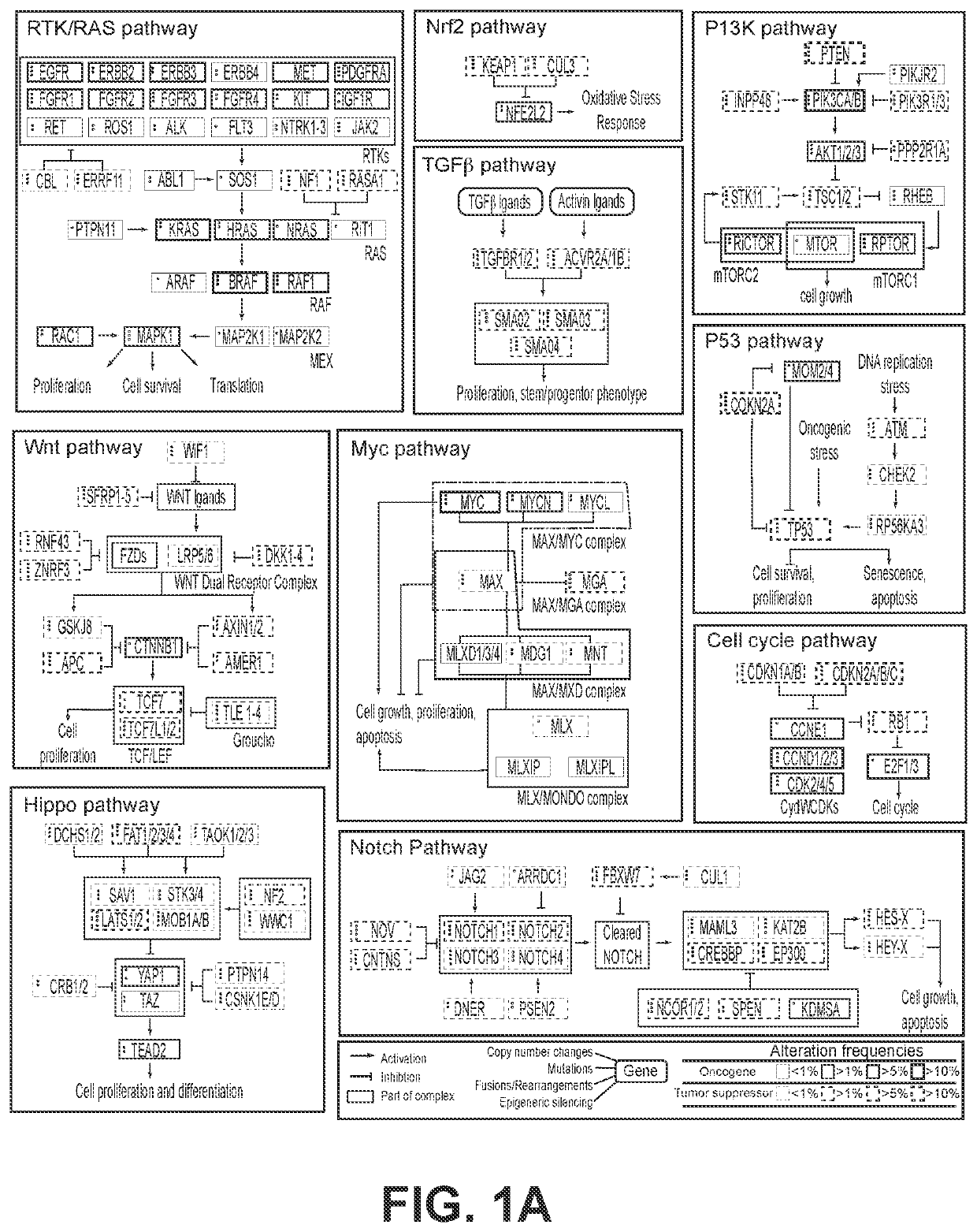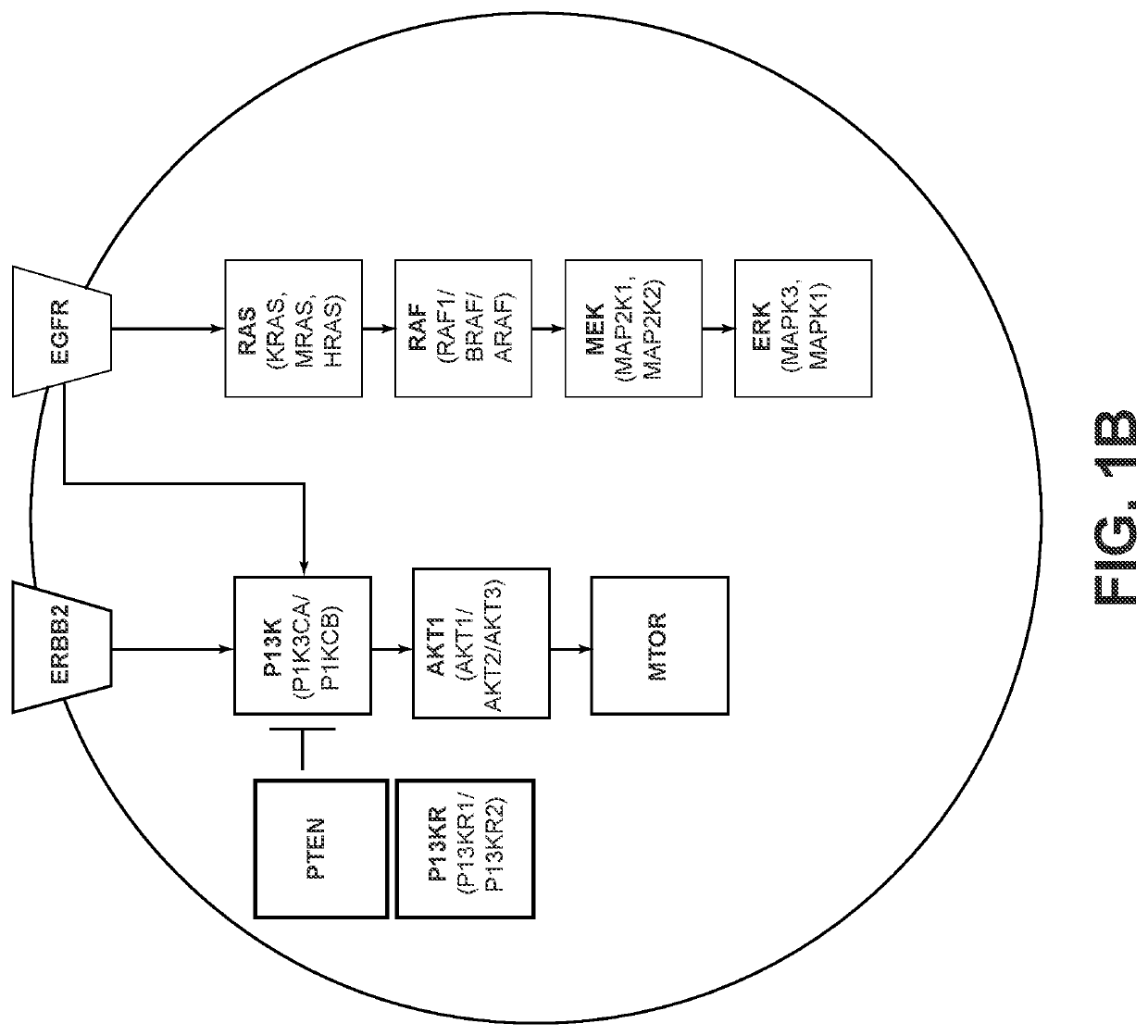Systems and methods for detecting cellular pathway dysregulation in cancer specimens
- Summary
- Abstract
- Description
- Claims
- Application Information
AI Technical Summary
Benefits of technology
Problems solved by technology
Method used
Image
Examples
example 1
nstruction for Pathway RAS / RTK and Pathway PI3K
[0737]As discussed in previously (see e.g., paragraph 151), it is often useful for pathways to be subdivided into modules rather than their individual proteins, with the modules including proteins with a relevant similarity, e.g., sequence similarity; function in terms of their effects on pathway activity; and / or level / position within the pathway, i.e., the proteins receive signals from the same upstream proteins and transmit their signal to the same downstream proteins. Several of these characteristics are related; for instance, proteins with similar amino acid sequences often have similar functions and similar levels within the pathway. For the purposes of constructing a pathway engine, the total set of proteins defined by the set of modules may not comprise the entire pathway as defined in the literature, which can often consist of dozens of proteins. Rather, only those modules with clinical relevance would be included, such as modul...
example 2
KRAS and PI3K Pathway Dysregulation in a Cohort of More than 1,500 Solid Tumors
[0742]In a cohort of more than 1,500 patients with lung adenocarcinoma, logistic regression analysis was performed on exome-capture RNA-seq expression profiles to identify the transcriptomic characteristics of disrupted KRAS and PI3K signaling using the pathway modules as described in Example 1.
[0743]In this example, patient samples were processed through RNA whole exome short-read next generation sequencing (NGS) to generate RNA sequencing data, and the RNA sequencing data were processed by a bioinformatics pipeline to generate a RNA-seq expression profile for each patient sample.
[0744]Specifically, solid tumor total nucleic acid (DNA and RNA) was extracted from macrodissected FFPE tissue sections and digested by proteinase K to eliminate proteins. RNA was purified from the total nucleic acid by TURBO DNase-I to eliminate DNA, followed by a reaction cleanup using RNA clean XP beads to remove enzymatic pr...
example 3
ysregulation Identification in a Subject Diagnosed with Lung Adenocarcinoma—RAS / RTK Pathway
[0754]In one example, a cancer specimen was collected from a patient having lung adenocarcinoma cancer. The specimen was processed as described above in Example 2. Briefly, the cancer specimen was processed by whole exome RNA-seq to generate a BAM file with mapped RNA reads, which were analyzed by a bioinformatics pipeline to determine raw and normalized counts for RNA molecules for each gene to generate a transcriptome value set containing a collection of numeric values wherein each numeric value was associated with a gene and represented a normalized number of detected read counts that aligned to that gene, also described as an expression level of that gene. The dataset contained expression levels for approximately 19,000 distinct genes.
[0755]The transcriptome value set was analyzed as described in 710 by a pathway engine 200n (trained as described in 520, with positive controls and negative...
PUM
 Login to View More
Login to View More Abstract
Description
Claims
Application Information
 Login to View More
Login to View More - R&D
- Intellectual Property
- Life Sciences
- Materials
- Tech Scout
- Unparalleled Data Quality
- Higher Quality Content
- 60% Fewer Hallucinations
Browse by: Latest US Patents, China's latest patents, Technical Efficacy Thesaurus, Application Domain, Technology Topic, Popular Technical Reports.
© 2025 PatSnap. All rights reserved.Legal|Privacy policy|Modern Slavery Act Transparency Statement|Sitemap|About US| Contact US: help@patsnap.com



